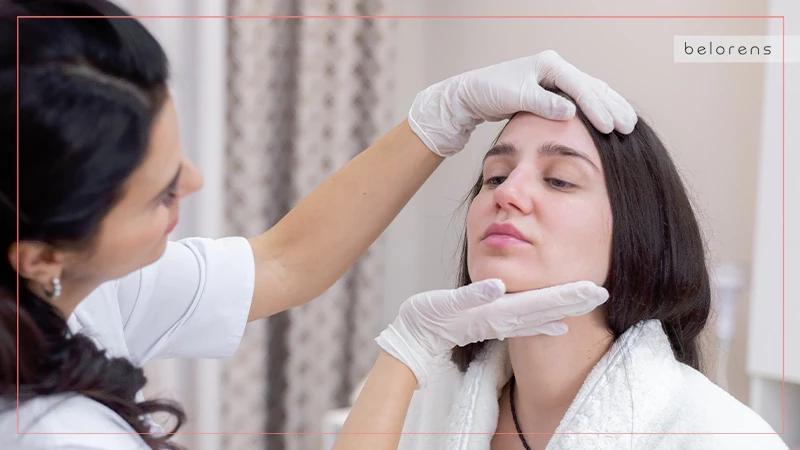Rhinoplasty vs Nose Filler Surgery: Everything you Need to Know Before you Choose the Right Treatment
- ByMedical Content Team
- Medically Reviewed byDr. Sabine Kulhanek
Fact checked
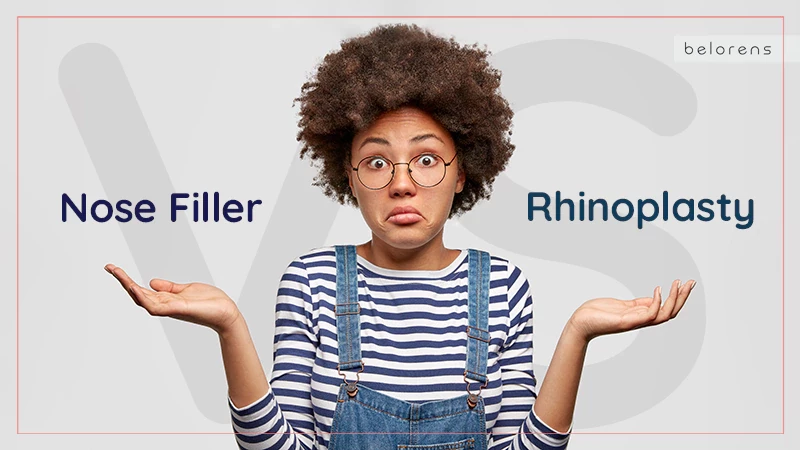
Table of contents
The primacy of cosmetic procedures by the year 2024 has reached unprecedented heights. Among the many different treatments found in the field, the so-called “Nose Jobs” are often included as one of the most popular and in-demand treatments. But these nose procedures encompass a wide variety of different medical surgeries with varying degrees of invasiveness. So, in order to avoid making the potentially wrong choice when it comes to getting a nose job, we need to familiarize ourselves with the most prominent operations in the sphere of nose surgeries. The two most important procedures among cosmetic nose operations are rhinoplasty and nose filler surgery.
The market for nose surgeries is absolutely massive, with an estimated market size of over 5.8 billion dollars in 2022, which is expected to undergo a further growth of 7% in 2023. It has become one of the most readily available treatments of all cosmetic medicine. So, in this article, we will go over the topic of “Rhinoplasty vs Nose Filler” in depth. First, we will evaluate each of the two operations in detail, going over their respective definitions, suitable candidates, pros and cons, as well as risks before comparing the two in a head-to-head comparison.
Detailed Guide on Rhinoplasty
Nose job, often referred to as a "rhinoplasty," is a surgical procedure designed to modify the appearance or structure of the nose for both cosmetic and medical purposes. Cosmetic rhinoplasty focuses on enhancing the visual aspects of the nose, including size, shape, and proportions, to improve facial harmony and address aesthetic concerns. On the other hand, medical rhinoplasty aims to address breathing difficulties and functional issues related to the nose by rectifying problems such as a deviated septum or structural issues affecting airflow.
Candidates for Rhinoplasty
Candidates for rhinoplasty fall into two categories: those seeking cosmetic improvements and those with functional concerns. Cosmetic candidates may want to address issues like a nasal hump, bulbous tip, nostril size or shape concerns, nasal asymmetry, or an overall desire for facial balance. Medical candidates, on the other hand, may have issues like a deviated septum, nasal valve collapse, or nasal trauma affecting their breathing.

Launch your rhinoplasty discussion & ask others if they are candidates for Rhinoplasty!
Rhinoplasty Common Misconceptions
Common misconceptions about rhinoplasty include the belief in instant results (while results take weeks to become fully evident due to swelling and bruising), the idea that there's a one-size-fits-all approach (each procedure is highly personalized), the misconception that it's painful and permanent (discomfort is manageable, and the nose can change over time), and the notion that it's only for the young (rhinoplasty is suitable for various age groups). Some people also mistakenly think that rhinoplasty leads to drastic changes, which is not necessarily the case, as it aims to enhance natural beauty and maintain facial harmony.
Pros and Cons of Rhinoplasty
Pros of rhinoplasty include enhanced appearance, improved breathing, tailored customization, and a positive impact on psychological well-being. However, there are cons to consider, such as the financial implications, rhinoplasty recovery duration, surgical risks, and the absence of absolute guarantees in achieving desired results, particularly if expectations are unrealistic. No procedure is without its own set of problems and cons. Rhinoplasty is no different.

Risks of Rhinoplasty
Risks associated with rhinoplasty surgery include the potential for infection, scarring, unsatisfactory outcomes, anesthesia-related risks, nasal obstruction, hematoma formation, numbness, prolonged swelling, the need for revision surgery, and psychological impacts.
Learning About Nose Filler Surgery
Now that we have learned about rhinoplasty comprehensively, it’s time to go for the next step in our rhinoplasty vs liquid rhinoplasty (nose filler) comparison. Here, we will learn in detail about the nose filler surgery. Nose filler surgery, also known as non-surgical rhinoplasty or liquid rhinoplasty, offers an alternative to traditional surgical methods for enhancing the appearance of the nose. This procedure employs injectable dermal fillers, typically hyaluronic acid-based like Restylane or Juvederm, to modify the nose's shape and address aesthetic concerns. It's considered less invasive and cost-effective than surgical rhinoplasty, with shorter recovery times.
Candidates for Nose Filler
Just like when we listed the candidates for rhinoplasty, we are going to list the candidates for nose filler surgery as well. This will help us do the rhinoplasty vs nose filler surgery comparison better. Candidates for nose filler surgery should have minor cosmetic issues, maintain good overall health, and possess realistic expectations about the procedure's outcomes. Non-smokers are preferred to enhance the healing process, and candidates must not exhibit allergies to dermal fillers' components. It's important to understand that nose filler surgery delivers temporary results, necessitating periodic touch-up treatments for maintenance.
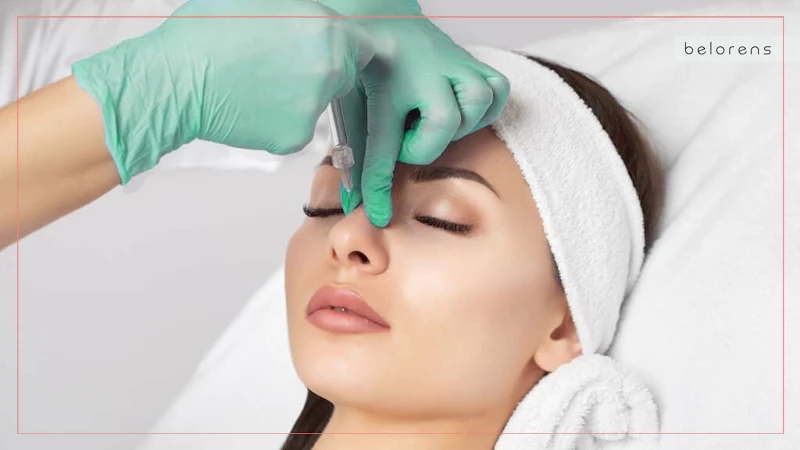
Common Misconceptions of Nose Filler Treatment
Now, let’s list all the misconceptions about the nose filler treatment. As a more recent and less utilized nose job, there are more misconceptions about this treatment compared to traditional rhinoplasty. Common misconceptions about nose filler treatment include the belief in permanent results (the effects are temporary), the notion of a painless process (some discomfort is expected), and the expectation of instantaneous results (swelling takes time to subside). It's essential to understand that nose filler treatment isn't a universal solution and can't address all nasal issues. Risks and complications associated with any medical procedure should not be underestimated, as non-surgical rhinoplasty carries risks like infection, bruising, and allergic reactions.
Pros
With the misconceptions about nose filler treatment out of the way, the next step in comparing rhinoplasty vs nose filler is to learn about the pros and benefits of nose filler treatment. The benefits of nose filler surgery include its non-invasive nature, quick procedure, minimal downtime, temporary results, lack of scarring, high customization, safety when performed by experienced professionals, immediate results, cost-effectiveness, and reversibility.
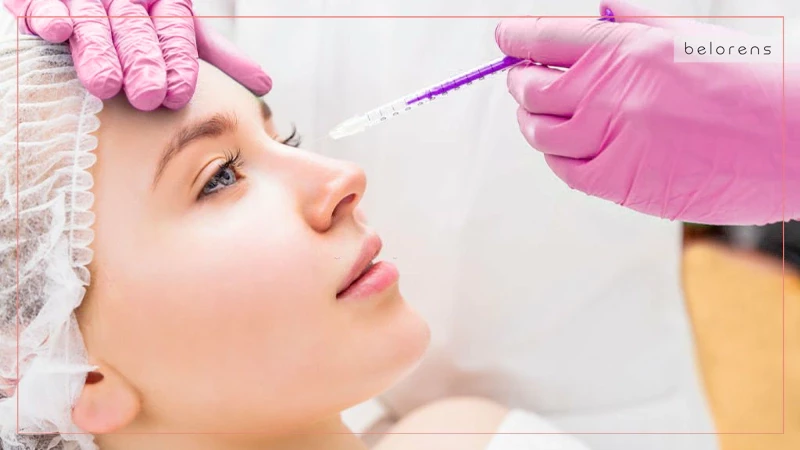
Cons
It would be unfair to list the benefits of nose filler treatment and not the cons. So, here are some of the most common cons of nose filler. Knowing these cons will give us a better image for when we want to compare rhinoplasty vs nose filler treatment. Cons of nose filler surgery encompass temporary results, limited corrections for structural issues or severe breathing difficulties, potential side effects, cost over time due to recurring treatments, unpredictable results, ineligibility for individuals with certain medical conditions or allergies, challenges in reversing the procedure, and the lack of long-term data on its safety and efficacy. Choosing an experienced practitioner is crucial to avoid potential complications.
Risks
Finally, in the final step in learning about nose filler treatments, let us quickly evaluate the risks of nose filler in the context of rhinoplasty vs nose filler treatment. The risks of nose filler surgery include the potential for infection at the injection sites, bruising and swelling (usually temporary but significant), allergic reactions, the formation of lumps and bumps, vascular complications, skin tissue necrosis in extreme cases, filler migration, overcorrection or under-correction, unpredictable results, difficulty in reversal, and the risk of scarring at the injection sites, particularly when performed by an inexperienced practitioner.
Understanding the comprehensive aspects of nose filler surgery is essential when considering it as an alternative to traditional rhinoplasty. Careful selection of a qualified practitioner is crucial to minimize potential risks and complications.
See the difference: before and after liquid rhinoplasty photos
Head-to-Head Comparison and Expected Results: Rhinoplasty vs Nose Filler Treatment
Finally, it’s time to conclude a thorough and complete head-to-head comparison between these two treatments to determine the winner of the rhinoplasty vs nose filler treatment debate. We will compare the two across 18 categories before coming up with a final verdict.
Invasiveness
- Nose Filler: Non-surgical rhinoplasty, often referred to as nose filler surgery, is renowned for its minimal invasiveness. The procedure primarily relies on precise dermal filler injections to sculpt and reshape the nose. There are no surgical incisions involved, and patients typically experience less trauma to the nasal tissues. This minimally invasive approach generally results in a shorter and more comfortable recovery period.
- Rhinoplasty: In contrast, surgical rhinoplasty, often referred to as a nose job, is a significantly more invasive procedure. It necessitates the expertise of a skilled surgeon who makes precise incisions in and around the nasal area to manipulate bone and cartilage. This comprehensive surgical approach, although effective in addressing various structural issues, usually leads to more post-operative discomfort and swelling.
Clearly, if you are interested in lesser invasiveness, nose filler treatment wins this round of the rhinoplasty vs nose filler debate.
Recovery Time
- Nose Filler: One of the distinct advantages of non-surgical rhinoplasty is its brief recovery time. Following the procedure, patients can typically return to their daily activities within a day or two. The side effects, such as swelling and bruising, are generally milder and of shorter duration compared to surgical rhinoplasty.
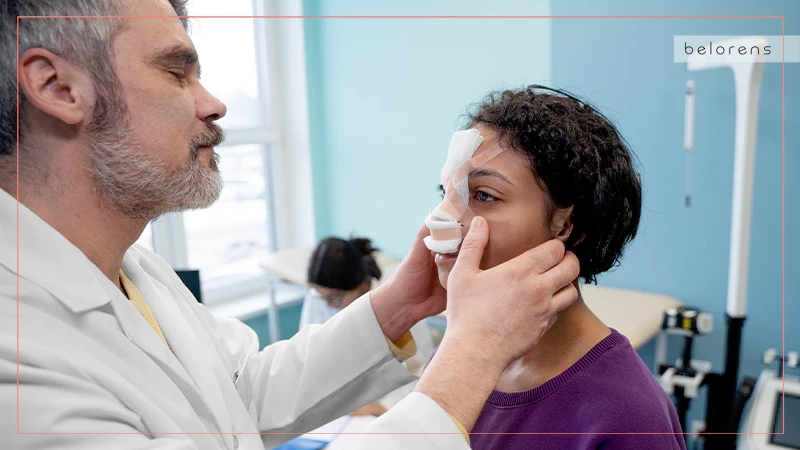
- Rhinoplasty: Surgical rhinoplasty typically entails a more extended recovery period. It may take several weeks for the swelling and bruising to fully subside. During this time, patients may need to take a break from work or social engagements, making it a more time-consuming and lifestyle-altering choice.
Once again, if your main concern in comparing rhinoplasty vs nose filler is recovery time, then the latter is the better option for you.
Cost
- Nose Filler: Non-surgical rhinoplasty is often favored for its cost-effectiveness. It is generally more budget-friendly than its surgical counterpart. The reduced cost stems from factors like the absence of operating room fees, general anesthesia, and the shorter duration of the procedure.
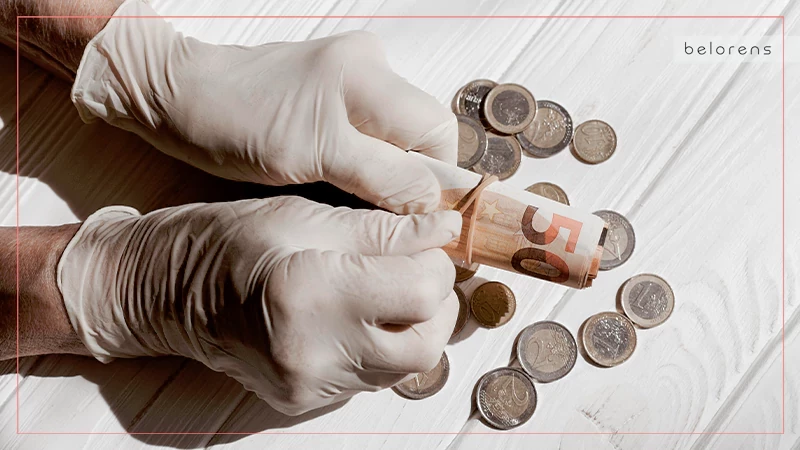
- Rhinoplasty: Surgical rhinoplasty is associated with higher costs. These costs can be attributed to several factors, including the expenses related to the surgical facility, the anesthesiologist's services, the surgeon's fees, and the comprehensive post-operative care required. While surgical rhinoplasty can yield permanent results, it also carries a more substantial financial investment.
The decision of which one takes the point here is difficult. On the one hand, rhinoplasty costs more, but it has a longer effect period. It largely comes down to preferences, but if all you are concerned about when comparing rhinoplasty vs nose filler is the cost, then go with nose filler.
Risks and Complications
- Nose Filler: Non-surgical rhinoplasty is generally considered safe, but it's not entirely risk-free. Common side effects include minor swelling, bruising, and occasional lumpiness at the injection sites. While these side effects are typically temporary, there is a slight risk of more severe complications, such as infection or vascular issues, if the filler is improperly administered.
- Rhinoplasty: Surgical rhinoplasty is a more complex procedure with potentially higher risks and complications. These can include infection, bleeding, anesthesia-related complications, and, in rare cases, unsatisfactory results or the need for revision surgery. The more invasive nature of surgical rhinoplasty makes it essential to choose a highly skilled and experienced surgeon to mitigate these risks.
Unless there is a severe case of nasal injury that strictly calls for surgery, the topic of potential complications in the context of rhinoplasty vs nose filler has a clear winner: nose filler treatment.
Customization
- Nose Filler: Non-surgical rhinoplasty offers a high level of customization. Practitioners can precisely tailor the procedure to address specific cosmetic concerns, such as dorsal hump reduction, correction of nasal asymmetry, or minor adjustments to the nasal tip. This flexibility allows patients to achieve personalized results.
- Rhinoplasty: Surgical rhinoplasty provides extensive customization options for reshaping the nose. It is suitable for complex changes, including structural alterations and the correction of more significant issues like deviated septums or breathing difficulties. However, it may not be as suitable for those seeking minor aesthetic enhancements.
Since a surgical and much more direct approach is used for rhinoplasty surgery, it also offers more customization opportunities. Therefore, this round of rhinoplasty vs nose filler goes to rhinoplasty.
See Also: Rhinoplasty Results in Pictures
Duration of the Procedure
- Nose Filler: Non-surgical rhinoplasty is characterized by its brevity. The procedure is typically completed in less than an hour, making it a convenient option for individuals with busy schedules. This quick turnaround allows patients to return to their daily routines promptly.
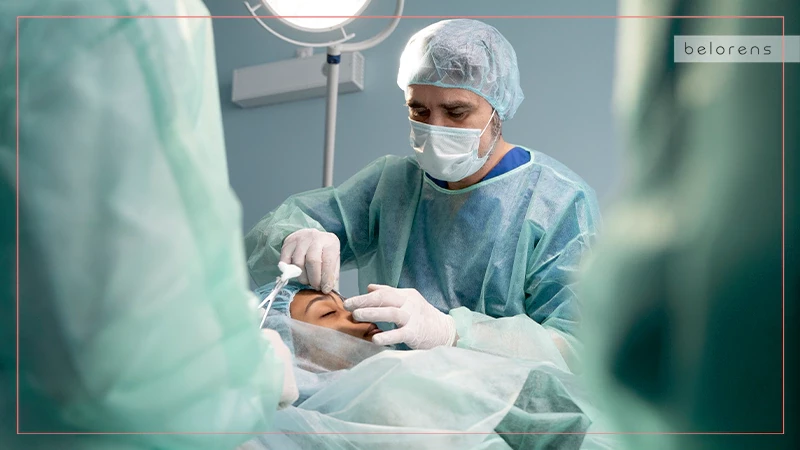
- Rhinoplasty: Surgical rhinoplasty is a more time-intensive procedure. The surgery itself may take several hours, and patients need to plan for a longer time commitment, including pre-operative preparations and post-operative recovery.
Rhinoplasty takes more time, but it also has a more direct impact on your nose. As a relative concept, this round of the rhinoplasty vs nose filler debate should be considered a draw.
Permanence
- Nose Filler: Non-surgical rhinoplasty offers temporary results. The duration of these results varies from several months to a couple of years, depending on the type of filler used and individual factors. While this allows patients to try out different looks, it requires ongoing maintenance.
- Rhinoplasty: Surgical rhinoplasty provides permanent results. The structural changes made during the surgery are enduring and do not require regular touch-ups. This makes it a suitable option for those seeking a lasting transformation of their nasal appearance.
If permanence is your desired trait, then definitely go for rhinoplasty vs nose filler.
Scarring
- Nose Filler: Scarring is not a concern in non-surgical rhinoplasty. Since the procedure does not involve surgical incisions, there are no external scars. This makes it an attractive option for those who want to avoid visible scarring.
- Rhinoplasty: Surgical rhinoplasty may result in minimal external scarring. Incisions are typically well-hidden within the nostrils or along the columella, the strip of skin between the nostrils. While these scars tend to be discreet, their visibility can vary depending on individual healing and surgical techniques.
Rhinoplasty is the only option here with a risk of scarring. So this point of the rhinoplasty vs nose filler comparison goes to nose filler treatment.
Anesthesia
- Nose Filler: Non-surgical rhinoplasty is usually performed with local anesthesia or the application of numbing cream to the treatment area. These forms of anesthesia provide patient comfort and minimize pain during the procedure.
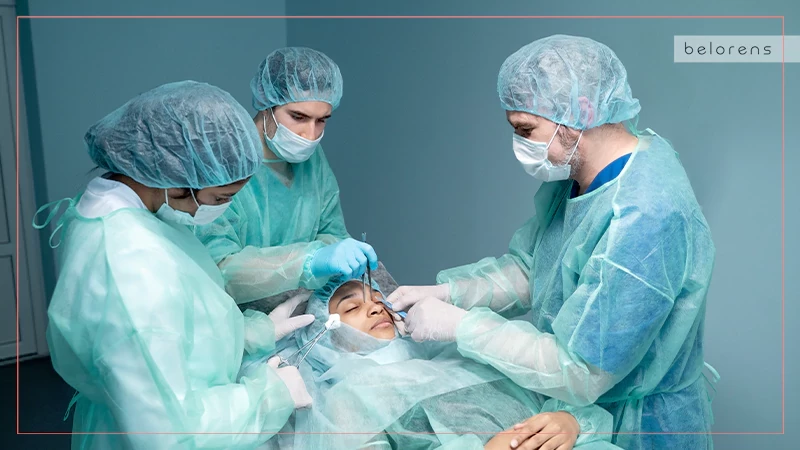
- Rhinoplasty: Surgical rhinoplasty requires general anesthesia or intravenous sedation, which renders the patient unconscious during the surgery. While these anesthesia options are safe when administered by trained professionals, they come with inherent risks associated with anesthesia use.
Both treatments require anesthesia, and the results of local and general anesthesia are relative to the impact of the surgery. So, in this regard, once again, there is a draw.
Read More About: Types of Anesthesia
Pain and Discomfort
- Nose Filler: Non-surgical rhinoplasty is associated with less pain and discomfort compared to surgical rhinoplasty. Most patients report experiencing only mild discomfort during and after the procedure. The recovery period is generally more comfortable.
- Rhinoplasty: Surgical rhinoplasty can be more painful and uncomfortable, particularly during the initial recovery phase. The pain is managed with prescription medications, but patients should be prepared for a more challenging recovery in terms of discomfort.
Obviously, when comparing rhinoplasty vs nose filler treatment in the context of pain, the invasiveness of the former causes more problems, but these effects are manageable, and the results are more comprehensible.
Effects on Breathing
- Rhinoplasty: Rhinoplasty, a surgical procedure, can have both positive and negative effects on breathing. When performed to correct structural issues like a deviated septum, it can significantly improve a patient's breathing. However, if the surgery involves extensive changes to the nasal structure, it may temporarily affect breathing during the healing process.

- Nose Filler treatment: In contrast, non-surgical rhinoplasty, which focuses on cosmetic enhancements using dermal fillers, typically has no impact on breathing. This makes it a preferred option for individuals seeking aesthetic improvements without concerns about airflow or nasal function.
So if maintaining ease of breathing is a top priority, nose filler treatment takes this round in our rhinoplasty vs nose filler comparison, provided your situation does not force surgery.
Reversibility
- Rhinoplasty: Rhinoplasty, once performed, yields permanent results. Adjustments or reversals require additional surgical procedures, which can be complex and involve a certain level of risk.
- Nose Filler: In contrast, non-surgical rhinoplasty offers a more reversible solution. The results are temporary, as they rely on dermal fillers that can be gradually absorbed by the body. If a patient is dissatisfied with the outcomes or desires changes, the filler can be dissolved or adjusted with relative ease. This flexibility can be reassuring for those who want to experiment with their nasal appearance or are concerned about irreversible changes.
While the process of nose filler is reversible, it also offers less potential for major changes, so take from that what you will when comparing rhinoplasty vs nose filler in the context of reversibility.
Age Restrictions
- Rhinoplasty: Rhinoplasty is generally performed on adults, particularly after nasal development is complete, which typically occurs in late adolescence. Surgeons prefer to operate on individuals with fully mature nasal structures.

- Nose Filler: This treatment has broader age acceptance. It is often available to individuals over 18 but may be suitable for a more extensive age range, including younger adults and older individuals. The age flexibility makes non-surgical rhinoplasty an appealing option for those who wish to address aesthetic concerns without the need to wait until adulthood.
Once again, the nose filler treatment is more diverse, but it also has limitations that make it unsuitable for general use in every case, and that is where surgical rhinoplasty comes in.
Also Read: The Right Age For Rhinoplasty
Suitability for Structural Changes
- Rhinoplasty: Rhinoplasty is the preferred choice when addressing significant structural changes. This surgical procedure can effectively correct issues like a deviated septum, reposition nasal bones, or modify cartilage to enhance nasal function and appearance.
- Nose Filler: In contrast, non-surgical rhinoplasty fails to provide the capacity for major structural changes. It instead excels at camouflaging minor irregularities, such as dorsal humps, or improving symmetry without making substantial alterations to the underlying nasal structure.
Therefore, the choice between these procedures depends on the extent of structural modification required. But when considering major changes, rhinoplasty is the only option in the rhinoplasty vs nose filler debate.
Also Read: Aesthetic and Functional Nose Concerns
Suitability for Minor Corrections
- Rhinoplasty: Rhinoplasty is a versatile option suitable for both minor and major cosmetic corrections. It offers the flexibility to address minor aesthetic concerns, such as refining the nasal tip or reducing a small dorsal hump, while also being capable of significant nasal transformations.
- Nose Filler Treatment: non-surgical rhinoplasty is particularly effective for minor aesthetic corrections. It is the go-to choice for individuals seeking subtle changes without the need for extensive surgery. These minor enhancements can include improving the symmetry of the nose, adjusting the angle, or creating a smoother profile, all with the convenience of a non-invasive procedure.
When comparing rhinoplasty vs nose filler in this context, the invasiveness, the costs, and the pain of rhinoplasty make nose filler a better candidate for minor corrections.
Aesthetic Enhancement
- Rhinoplasty: RhinoRhinoplasty is a comprehensive procedure that can provide significant aesthetic enhancement. It allows patients to achieve a wide range of aesthetic goals, including altering the size, shape, and overall appearance of the nose. Whether the objective is to reduce a dorsal hump, refine the nasal tip, or correct asymmetry, surgical rhinoplasty can accomplish these transformations.

- Nose Filler: Nose Filler Non-surgical rhinoplasty, while highly effective for aesthetic enhancement, primarily focuses on cosmetic improvements without altering the nasal structure. It excels at camouflaging imperfections, smoothing contours, and enhancing overall facial harmony, providing a less invasive route to aesthetic enhancement.
The decision largely comes down to the patient, but in the end, when debating rhinoplasty vs nose filler in this regard, rhinoplasty has a much more dynamic use case.
Maintenance
- Rhinoplasty: Rhinoplasty typically provides permanent results, necessitating no routine maintenance beyond the post-operative recovery phase. Once the desired changes are achieved, they are enduring, and patients do not need to schedule routine follow-up appointments.
- Nose Filler: Non-surgical rhinoplasty results are temporary. The longevity of these results varies based on the type of dermal fillers used and individual factors. Maintenance is a key consideration for individuals opting for this procedure. Periodic touch-up treatments are required to sustain the desired appearance, making it an ongoing commitment.
So in the short term, rhinoplasty has more maintenance, but in the long term there are much more maintenance needs for nose filler treatment. This round of the rhinoplasty vs nose filler comparison goes to rhinoplasty.
Safety Profile
- Rhinoplasty: Rhinoplasty is generally a safe procedure when performed by a qualified and experienced surgeon. However, it is a surgical intervention that comes with inherent surgical risks. Complications can include bleeding, infection, anesthesia-related issues, and, in rare cases, dissatisfaction with results.
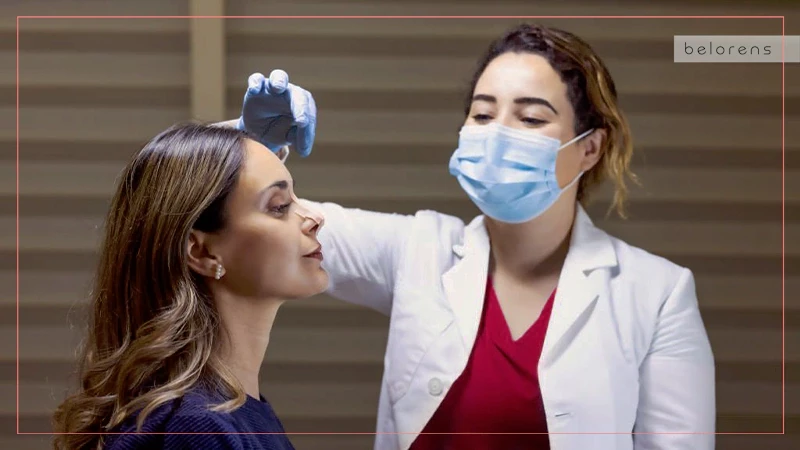
- Nose FIller: On the other hand, non-surgical rhinoplasty or nose filler treatment boasts a lower risk profile. It is not entirely risk-free but typically involves fewer complications. Common side effects include mild swelling, bruising, and occasional lumpiness, which are usually temporary and manageable. Non-surgical rhinoplasty provides a safer option for those who want to enhance their nasal appearance with reduced risk.
At the hands of a true professional, there is little to be concerned about, but looking at the broader prospect of getting a nose job, there is little doubt that nose filler treatment is safer.
The Final Verdict: Which One is the Best for You?
After a thorough investigation and comparing rhinoplasty vs nose filler treatment, a clear pattern appears: traditional rhinoplasty is more invasive, painful, and costly, but in exchange, offers permanent effect, more customization opportunities, and can be used in many more adverse scenarios where nose fillers cannot be used.
On the other hand, nose fillers are much less painful, take less time, have fewer side effects, and are cheaper. But they also have limited use cases. It also has reversible results and the effects wear off with time.
The bottom line is that there is no clear winner. There is a reason each of these treatments exists. Naturally, on top of your own personal preferences, you should also factor in the professional opinion of the surgeon. When it comes to comparing rhinoplasty vs nose filler treatment, their words are the final determining factor in which one is the best for you!
FAQ
How can I choose the right provider for these procedures?
When considering nose filler surgery or rhinoplasty, it's essential to choose a board-certified plastic surgeon or dermatologist with experience in the specific procedure. Comprehensive consultations are crucial to discuss your goals and assess the suitability of the procedure.
Are there any age restrictions for these procedures?
Age restrictions may vary depending on the practitioner and local regulations. In general, individuals seeking nose filler surgery should be at least 18 years old. Rhinoplasty may have age requirements set by the surgeon and is typically performed on adults.
Are the results of nose filler surgery reversible?
While the results of nose filler surgery are temporary, reversing the procedure can be challenging and may require additional treatments for filler dissolution. Rhinoplasty results, being permanent, are not reversible.
Are there any restrictions on physical activities following these procedures?
Both rhinoplasty and non-surgical rhinoplasty may have limitations on physical and athletic activities in the immediate post-procedure period. It's crucial to follow your surgeon's or provider's recommendations regarding restrictions and the gradual resumption of physical activities.
Can I combine non-surgical rhinoplasty with other cosmetic procedures?
Non-surgical rhinoplasty can often be combined with other non-invasive cosmetic procedures like Botox or dermal fillers to achieve a comprehensive facial enhancement. Consult with your provider to discuss the options available
Can I wear glasses or sunglasses after these procedures?
After rhinoplasty, wearing glasses may need to be avoided or adjusted for a certain period to prevent pressure on the healing nasal structure. In contrast, non-surgical rhinoplasty does not pose restrictions on wearing glasses or sunglasses.

